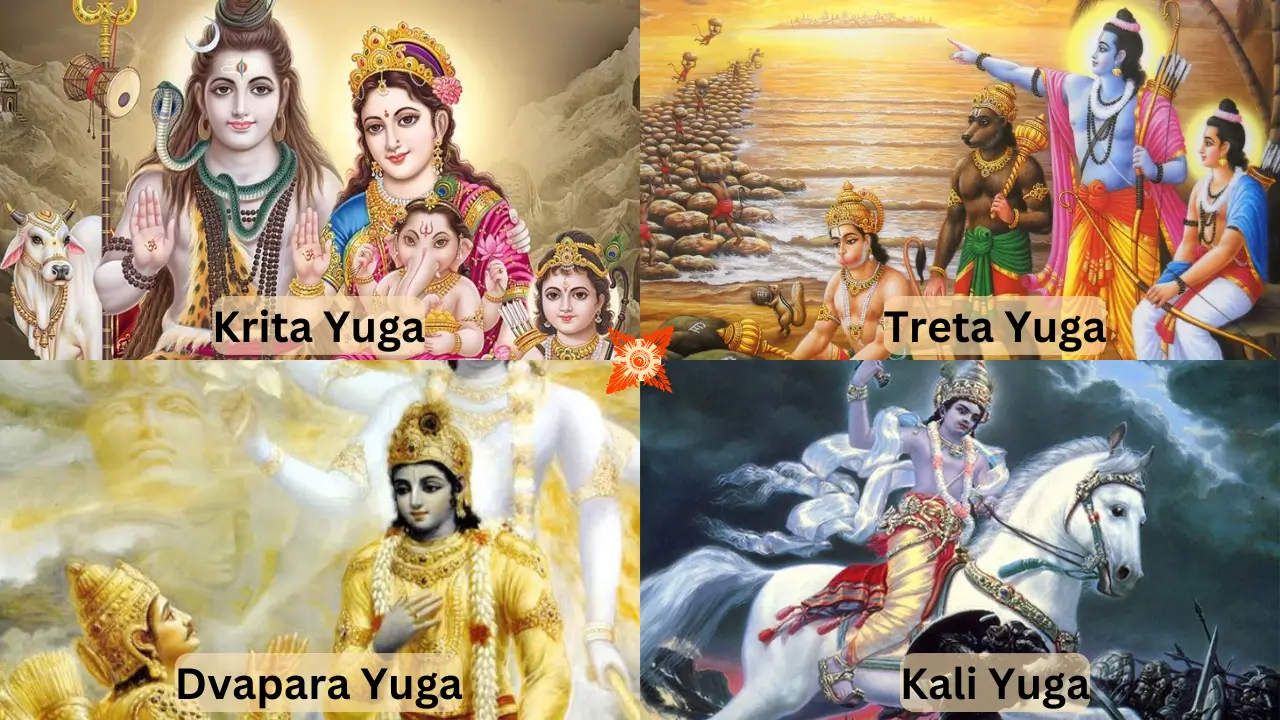The Four Yugas: Hindu Cosmology and Time Cycles

Introduction to Yugas
The concept of Yugas is fundamental in Hindu cosmology, representing the cyclical nature of time. Each Yuga is a distinct epoch with its own characteristics and duration, contributing to the grand cosmic cycle.
Krita Yuga
Description: Krita Yuga, is the first and the longest Yuga, symbolizing an era of perfect truth and righteousness.
Characteristics: This period is marked by complete virtue, purity, and harmony. Humans lived in perfect harmony with nature and each other, with no need for laws or punishments.
Duration: 1,728,000 years.
Treta Yuga
Overview: The second Yuga, Treta Yuga, sees a slight decline in virtue compared to Satya Yuga.
Notable Events and Characteristics: While still an age of significant righteousness, it introduces the concept of rituals and sacrifices. Notable epic events, such as the Ramayana, occur in this Yuga.
Duration: 1,296,000 years.
Dvapara Yuga
Description: The third Yuga, Dvapara Yuga, experiences a further decline in virtue and increase in human strife.
Important Occurrences: This era is characterized by the advent of knowledge and the rise of conflicts and wars. The Mahabharata, a key epic, takes place during this period.
Duration: 864,000 years.
Kali Yuga
Overview: Kali Yuga is the fourth and current Yuga, marked by the greatest decline in righteousness and an increase in ignorance and vice.
Key Features: This era is dominated by moral decay, dishonesty, and spiritual decline. However, it is also believed to be a time when spiritual awakening can lead to liberation.
Duration: 432,000 years.
Cycle of Yugas
The Yugas operate in a continuous cycle, transitioning from one to the next. After the end of Kali Yuga, the cycle restarts with Satya Yuga, symbolizing a renewal and restoration of righteousness.
Conclusion
Understanding the Yugas offers insight into Hindu beliefs about the progression of time and the evolution of human consciousness. The cyclical nature of these epochs underscores the eternal cosmic order and its influence on the universe.
